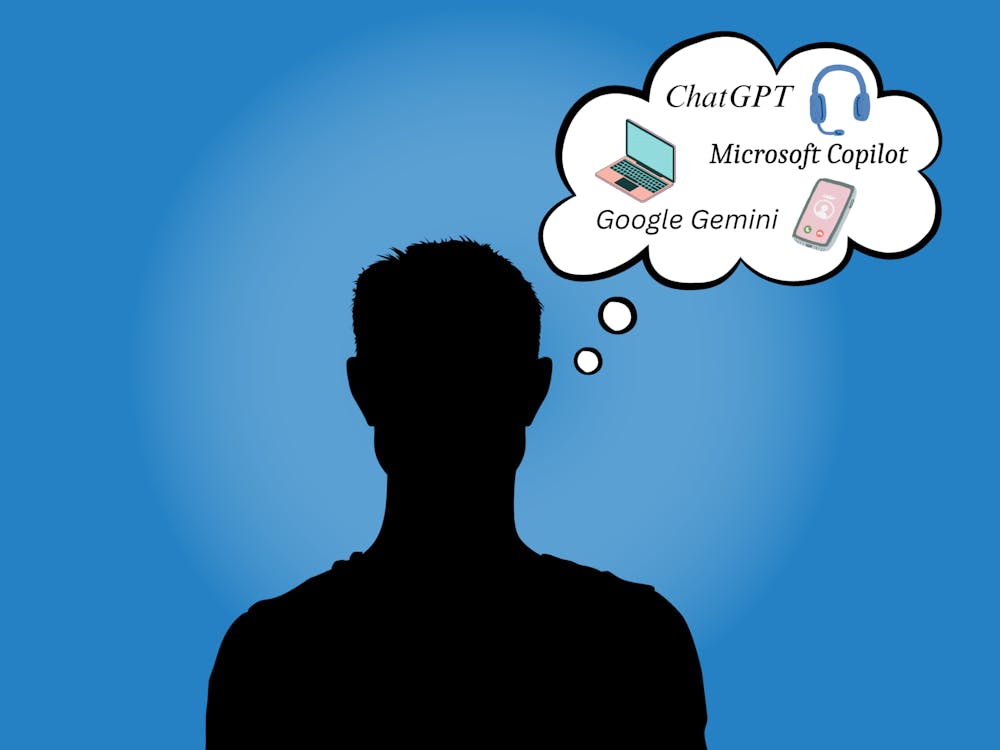Artificial Intelligence (AI) is no longer a distant thought. It is the present.
From classrooms to workplaces, AI is creating efficient ways to do tasks. For students, this shift isn’t something to fear. When used thoughtfully, AI can be a powerful tool for educational opportunities.
At the start of a person’s education, they are instructed to discover their learning style. According to the article, Types of learning? by Maike Looß, there are visual learners, auditory learners, and many more, but the basis is that everyone processes information differently.
AI can be a major benefit in education because it offers personalized learning. Traditional classrooms, where there is one teacher for dozens of students, can be a struggle for the educator and the learner. AI can tailor lessons to each student’s strengths and weaknesses.
AI programs like Smart Sparrow help educators and students better organize their workload and make tasks interactive. These programs allow students to learn concepts in their own way, and they help educators tailor to individual students. This approach allows students to move at their own pace instead of memorizing information for exams.
AI is not only a tool for students in the classroom, but it can also help students take career planning into their own hands. Most college students have sat down in their rooms, not knowing how to make their resumes appealing. American University states that the possibilities of AI with career help are endless. AI-powered platforms can give personalized insights for practical things, such as polishing resumes, suggesting networking opportunities and running practice interviews.
Most platforms, like Canva, have AI tools that help users build their resumes. There are also more advanced programs, like VMock, that provide more than just resume building. The Career Center at Seton Hall provides VMock to students. Getting a nice, polished resume can be challenging and frightening, but AI programs are there to assist people.
When most people think of AI, they think of ChatGPT or Google Gemini; however, AI is implemented in our lives more than we realize. The University of San Diego published an article describing different ways that AI can be beneficial to students. According to the article, AI makes certain situations more accessible for students with disabilities. Students who are deaf or have vision trouble can use tools like text-to-speech and speech-to-text to transcribe lessons in real time. This technology ensures that all students can participate and engage properly with their learning.
Before the world gets carried away with the possibilities of AI, it is important to understand that AI can have negative impacts. In fact, it carries some serious risks for education—the most prevalent issue is overreliance. According to Justin Jackson, a large usage of AI leads to cognitive offloading, where users are relying on tools instead of their critical thinking skills to solve problems. If students frequently rely on using AI, even for simple things like solving math problems, they could lose the skills that education is meant to develop. Critical thinking and creativity are important skills, and overreliance on AI can diminish those capabilities.
Another growing problem is academic integrity. AI can write essays quickly or solve assignments in seconds. The temptation to cut corners and save time is tempting. According to the University of Illinois, students who use AI jeopardize their learning and make it unfair for students who do their work. Schools find ways to update plagiarism policies, using programs like Turnitin, a detector for AI usage in assignments. If students treat AI as a substitute for learning rather than a beneficial tool, they are cheating themselves out of growth.
According to both the University of Illinois and Seton Hall University, a growing challenge with AI is that these programs often have “hallucinations.” Hallucinations are when a program, like any AI, provides fictitious information. AI has limitations of its own, and at times, it cannot find all the correct information, so it provides incorrect research. AI also references many sources to provide information, some of which may not be correct. If the information in the source is incorrect, then the AI will also be wrong. With this being said, it is crucial to fact-check the information that AI provides.
In the long run, AI is here to stay. Students should embrace the change, but in a monitored way. If it is used wisely, AI can help students perfect their learning styles, grow their careers and make learning more accessible.
The challenge with AI usage in education is all about balance—it should be seen as a partner, not a replacement.
Amelia Wysoczanski is a writer for The Setonian’s Opinion section. She can be reached at amelia.wysoczanski@student.shu.edu.





